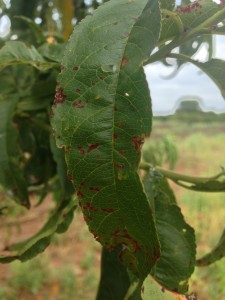 The definition of beauty has become a rather obsessive paradigm that has affected present society. It is a constant desire to reach what is perceived to be “perfection.” This infectious ideal has given rise to profitable industries of cosmetics, heavy research of youth enhancing serums, even to the extent of affecting our perspective of healthy food products. The slightest blemish or spot on a fruit may discourage fellow consumers, potentially preventing their purchase and leaving the fruit to rot in the produce isle. What a waste.
The definition of beauty has become a rather obsessive paradigm that has affected present society. It is a constant desire to reach what is perceived to be “perfection.” This infectious ideal has given rise to profitable industries of cosmetics, heavy research of youth enhancing serums, even to the extent of affecting our perspective of healthy food products. The slightest blemish or spot on a fruit may discourage fellow consumers, potentially preventing their purchase and leaving the fruit to rot in the produce isle. What a waste.
One such blemish that can severely damage the appearance of fruit is a disease known as bacterial spot. Bacterial spot is caused by Xanthomonas compestris. First discovered on plums in the early 1900s, this disease is commonly seen on many stone fruits such as peaches, nectarines, and apricots3. Bacterial spot is also known as “bacterial shot hole” for the characteristic bullet-like holes in the affected leaves2. The leaf symptoms b egin as small chlorotic lesions that gradually brown and will create jagged holes in such areas. Young leaves are most easily susceptible to infection as they bud. The warming spring temperatures and rain provide appropriate conditions for bacteria to spread leaf to leaf1. The symptoms on the fruit, the most crucial commodity, begin as small brown spots that will gradually spread and grow together across the fruit. These spots will darken and form lesions that can crack the fruit, leaving it vulnerable to other pathogens2.
egin as small chlorotic lesions that gradually brown and will create jagged holes in such areas. Young leaves are most easily susceptible to infection as they bud. The warming spring temperatures and rain provide appropriate conditions for bacteria to spread leaf to leaf1. The symptoms on the fruit, the most crucial commodity, begin as small brown spots that will gradually spread and grow together across the fruit. These spots will darken and form lesions that can crack the fruit, leaving it vulnerable to other pathogens2.
As this is a concern to many growers, such effort has been placed into their pesticide and herbicide schedules. Not only will these chemicals maintain the overall health of their orchards, keeping pathogens at bay through prevention, but they will attempt to produce the healthiest and most “beautiful” fruit to satisfy their choosiest of customers. Beauty is not always simply skin deep.
Works cited:
- “Bacterial Spot of Peach.” The Plant Disease Diagnostic Clinic at Cornell University, Jan. 2013. Web. 17 July 2014.
- “Peach, Apricot, and Nectarine.” Texas Plant Disease Handbook. Texas A&M AgriLife Extension, n.d. Web. 17 July 2014.
- Ritchie, David F. “Bacterial Spot.” Department of Plant Pathology North Carolina State University, Aug. 2007. Web. 17 July 2014.
Ever so often I get the privilege to supervise students in the BESC 484W course. This is described in the course catalog as “An on-the-job supervised experience program conducted in the area of the student’s specialization.” This summer (2014), there are 2 BESC 484 students working at the TX Plant Clinic. One of their assignments for this writing intensive course is to write a brief write up of something that interest them (related to plant pathology) which they may have seen or experience in the course of their stint at the TX Plant Clinic. They are also highly encouraged to take photographs of subject (training in photo documentation).
“Beauty is only Skin Deep” is submitted by BESC senior, A. Schmelpfening, to fulfill one of her BESC484W writing assignments. Enjoy -KO


